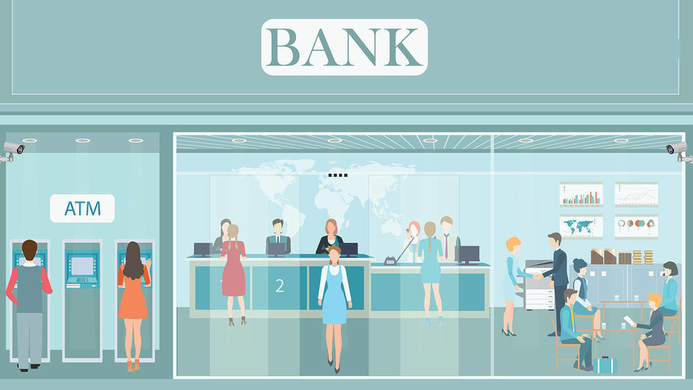When asked to compute simple financial mechanisms, for example compounding interest rates, most ordinary people, who possess no particular financial literacy skills, fail. And yet, over the past decade and a half, European banks have sold more than €2 trillion of highly complex financial products to households. These so-called retail structured products are investment products whose payoff is defined according to a (usually elaborate) formula over a given underlying financial index (such as the FTSE 100 or the NIKKEI 225). “There are plenty of products out there that are difficult to figure out, even for people with a Ph.D. in finance,” says Boris Vallée, who himself holds such a degree from HEC Paris. So what is the rationale behind the issuing of complex securities to notoriously unsophisticated investors like households? Boris Vallée, who co-authored a working paper on the subject with Claire Célérier, another finance professor and graduate from HEC Paris, explored the motives and mechanisms behind the banks' marketing strategies, and their reliance on product complexity.
Counter-intuitive success
The co-authors' starting point was the puzzling fact that complex financial products are successfully marketed to retail investors. Even more surprisingly, they note that product complexity significantly increased over the 2002-2010 period, by more than 15%, with almost no decrease during the financial crisis. “This evolution for retail investment products is surprising compared to the ones targeted at traditional players. Mutual fund managers were reluctant to keep using complex products after the financial crisis, and fled to so-called 'plain vanilla', or basic, instruments,” points out Boris Vallée. They set out to measure complexity in retail structured products in order to explore interactions between product design and bank marketing strategies. After all, they supposed, banks do not offer complexity for the sake of complexity, but for a specific purpose.
Measuring product complexity
Their main challenge was to figure out a way to capture complexity. They focused on the payoff formula, which defines returns on investments. Descriptions of instruments such as French savings bank Crédit Agricole's “Jayanne 4”, whose convoluted formula is sprinkled with jargon (such as, “final basket performance”, “capping,” and so on) and conditions (such as, “if the performance of the worst-performing index...”), provide abundant anecdotal evidence of high product complexity.
However, they wanted to quantify and compare across the market. For this purpose, they ran text analysis algorithms on the descriptions of more than 50,000 products, counting the number of features in the formula, the number of possible scenarios affecting the final payoff, as well as the number of characters in the text description. They could then establish that average product complexity was high: the average product in the sample included 2.5 features in its payoff formula (features such as “call” or “reverse convertible”, which are not easy for the layman to understand), 2.2 scenarios and required 508 characters to describe. The researchers then explored the determinants of complexity.
Banks use complexity to deliver products that promise high returns.
Highlighting high returns and shrouding risks
Boris Vallée and Claire Célérier's main finding is that banks use complexity to deliver products that promise high returns. For instance, in the subsample of coupon products, the headline rate – the yearly return the investor will receive in the best possible scenario – averages 8.2%, which is relatively high compared with the prevailing benchmark interest rate of 3.7% over the corresponding period. By highlighting the high returns that investors get in positive scenarios, banks encourage them to overweigh the probability that they will get this return.
Incidentally, the authors note that banks also rely on powerful metaphors in their marketing material, using names such as “Energetic”, “Triathlon,” and “Conquistador” for their products, with the probable goal of associating positive attributes and making the headline rate more salient. “The fact that banks use persuasion techniques, by giving products magical names such as 'Unicorn' or 'Elixir' in an environment where we should be thinking rationally is illustrative of their targeted strategy,” comments Boris Vallée. In addition, he and his co-author found that complex products were riskier: products that exposed investors to complete losses represented 30% of the issuance products of their sample, and increased to 35% by the end of the sample period.
Taking advantage of the customer?
So if banks use complex product descriptions to entice customers to invest in riskier products, are they taking advantage of them? The researchers did start off wondering whether financial institutions were simply aiming at confusing investors – using complexity as a shrouding technique and making comparison between products harder. But they nuanced their analysis: “All types of firms have such strategies to mitigate competition, for instance telecommunications operators complexify their offers with options of so many free text messages included and so on”, says Boris Vallée. He points out that the offer of high headline rates is also an answer to demand on the part of households: “It is not necessarily rational to expect a return of 7% in a context of interest rates just above 1%, but if the client base is asking for it, banks will find a way to answer this demand.” His argument seems supported by another finding: the fact that banks are more inclined to issue high-headline-rate and more complex products in a context of low interest rates (in other words, one where customers are looking for alternative investments).
In the end, it is also hardly surprising that complex products are more profitable for banks: “If they inflate the expectations of investors, they can take an inflated share of the profit,” says Boris Vallée.









